
Does the name scare you? It shouldn’t; Death Valley is a warm winter escape that offers lots of hiking, scenic drives, and even a golf course. Death Valley National Park also holds a lot of records. It had the hottest temperature recorded and the lowest elevation in the U.S. It is also the largest national park in the Lower 48. Best visited from October to May, Death Valley offers a unique landscape to explore, made famous in movies, and there is even year-round swimming in a palm-treed Oasis. Here are the top things to do in Death Valley National Park.
Top 9 Things to Do in Death Valley National Park
-
Stop by the Visitor Center.
-
Take a Scenic Drive.
-
Hike in Death Valley.
-
Bike along a Trail.
-
Go Birding or Wildlife Viewing
-
Enjoy the Skies above Death Valley.
-
Earn a Junior Ranger Badge Or Attend a Ranger Program
-
Swim in One of Its Natural Pools
-
Spend the Night in Death Valley.
Death Valley At a Glance
| Year Established: 1994 |
| Location: Southern California and Nevada |
| Size: over 3.4 million acres |
| Top Features: Hottest, Driest and Lowest National Park |
Guide to Joshua Tree National Park
Top Places to Visit in Death Valley
Death Valley offers a lot of space to explore.
Artist’s Palette–Located off Badwater Road, the one-way 9-mile drive meanders through striated rock formations.
Badwater Basin–Located south of Furnace Creek down Badwater Road, see the lowest point in North America at -282 ft. Also, see the polygon formations on the salt flat.
The Devil’s Golf Course–Along Badwater Road, the rock salt crystals have eroded into a sea of jagged rocks.
Golden Canyon–Find an interpretive trail or a longer loop hike in this area off Badwater Road. Star Wars Episode IV was filmed at this location.
Zabriskie Point–One of the most popular viewpoints, especially at sunrise and sunset. Located on Highway 190 close to the eastern entrance, near Death Valley Junction.
Mesquite Dunes–Located near Stovepipe Wells Village, the Mesquite Dunes are the largest dunes in the park. Find crescent, star and linear dunes. The dudes were used for the Tatooine scenes in Star Wars Episode IV.
Keane Wonder Mine–See an intact tramway from 1909 used for gold ore extraction. Located off the Beatty Cutoff, north of Furnace Creek
Ubehebe Crater–Located close to Scotty’s Castle, it’s a 600-foot deep and half a mile across volcanic crater.
Wildrose Charcoal Kilns–Located along Emigrant Canyon Road, find ten 25-foot tall masonry beehive structures. It’s cooler at the charcoal kilns since the elevation is 5,000 feet.
Rainbow Canyon–Head to Father Crowley Vista Point for a look over the colorful desert landscape. If you are lucky, catch a military jet in a low-flying training mission in the R-2508 Airspace Complex. Some jets can be as close as 200 feet from the ground.
Dante’s Peak–Another viewpoint of the entire Badwater Basin along with the Panamint Mountains to the west. Located south of Zabriskie Point.
Death Valley National Park
Death Valley is the largest national park outside of Alaska, with over 3 million acres. Within its boundaries is the lowest point in North America. That’s not the only record. The hottest temperature ever recorded happened at the Furnace Creek Resort in 1913 (134 F/56.7 C). During the summer, temperatures routinely reach 120F (50C) during the day. Summer temperatures usually start in April and continue through October.
Surrounded by the Amargosa and Panamint mountain ranges, Death Valley is 140 miles long. The peaks surrounding Death Valley can reach 11,000 feet. This makes for some epic desert landscape photos.
Death Valley is an International Dark Sky Park, and you can see the Milky Way without a telescope. Park rangers host star-gazing programs from the fall to the spring, and there’s even a special Junior Ranger patch for Dark Skies.
Weekend Itinerary for Joshua Tree
Why is it So hot?
Sure, people will tell you it’s a dry heat, but so is my oven. During the summer, the park rangers almost shutter the park and suspend programming just to keep visitors safe.
Death Valley is surrounded by the Amargosa Mountains on one side and the Panamint Valley mountains on the other. With the narrow valley in-between and a deep valley separating them, it essentially traps the heat. The valley floor lacks vegetation so it reflects the heat.
Take precautions when traveling in Death Valley during the summer, like carrying a gallon of water per person. Refrain from hiking at low elevations during the warmer months.
I visited in both July and January. The heat is intense on people and vehicles in the summer. During the winter, the weather is warm enough to swim in the pools at Furnace Creek.
Death Valley Visitor Center
Furnace Creek Visitor Center
This is the main visitor center in Death Valley National Park. Stopping at a park’s visitor center is one of the top things to do in Death Valley National Park.
It offers an interpretive area with a park film along with a book store and gift shop. It features restrooms too.
Located on SR 190 near the intersection of Badwater Road. Open daily from 8 a.m. to 5 p.m.
Scenic Drives in Death Valley
All the routes in Death Valley offer expansive views of Death Valley. This is one of the top things to do in Death Valley National Park.
SR 190–It is the main road in Death Valley and travels from the eastern to the western entrance as it passes top areas like Furnace Creek.
Badwater Road–From Furnace Creek, it is a scenic road to reach Badwater Basin.
Artists Palette–A short turn-off from Badwater Road that winds through the colorful rock feature called Artists Palette.
Dante’s View–From SR 190 this route heads south out of the park on the eastern side.
Death Valley features hundreds of miles of unpaved roads, best suited for 4x4s. Please observe all signs as conditions can change frequently through the seasons.
Mojave Desert Planning Guide
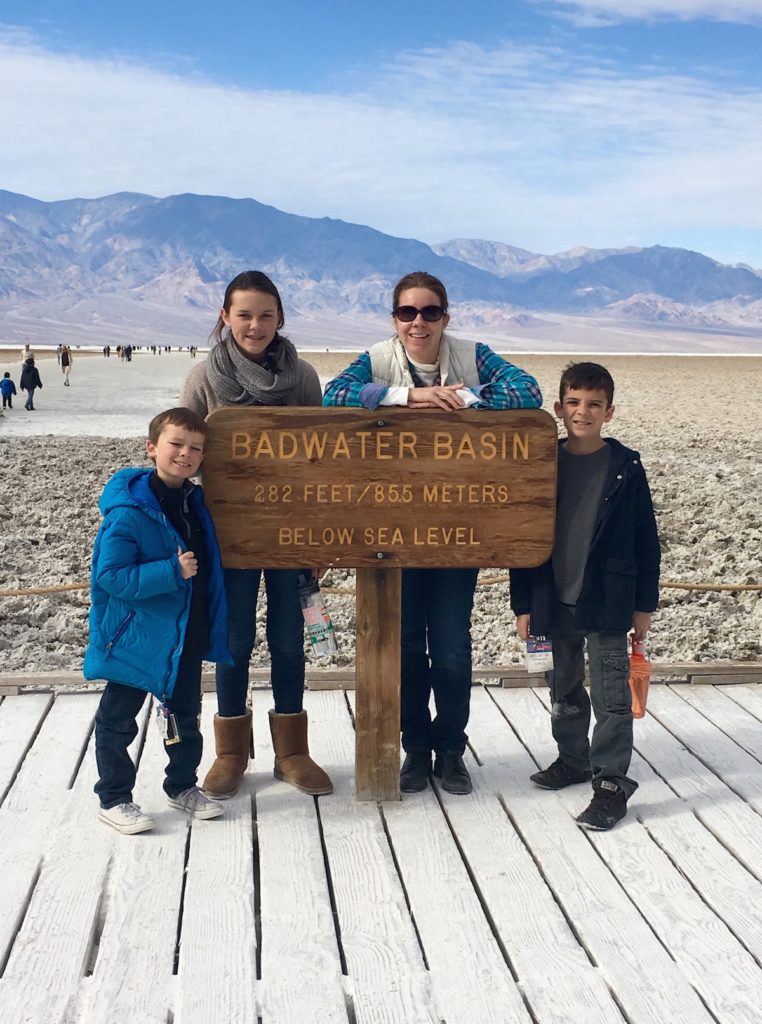
Hiking in Death Valley
Hiking is a great way to see a park weather permitting. It is one of the top things to do in Death Valley National Park.
Easy Hiking
Harmony Borax Works–.4-mile flat path
Badwater Basin–1-mile flat trail
Mesquite Dunes–2-mile trail over sand
Moderate Hiking
Ubehebe Crater–1.5-mile trail
Golden Canyon–3-mile trail
Darwin Falls–2-mile round trip trail
Biking in Death Valley National Park
Bikes can be used on all roads open for vehicular traffic, both paved and unpaved. Additionally, you will find a bike path between the Harmony Borax Works and the Visitor Center.
Easy Bike Routes
Bike Bath—1-mile bike path from Harmony Borax Works to the Visitor Center
Salt Creek Road—1.2-mile route on a graded gravel road.
20-Mule Team Canyon Road—3-mile route a graded gravel road.
Moderate and difficult routes are available.
Top National Park Road Trips from LA
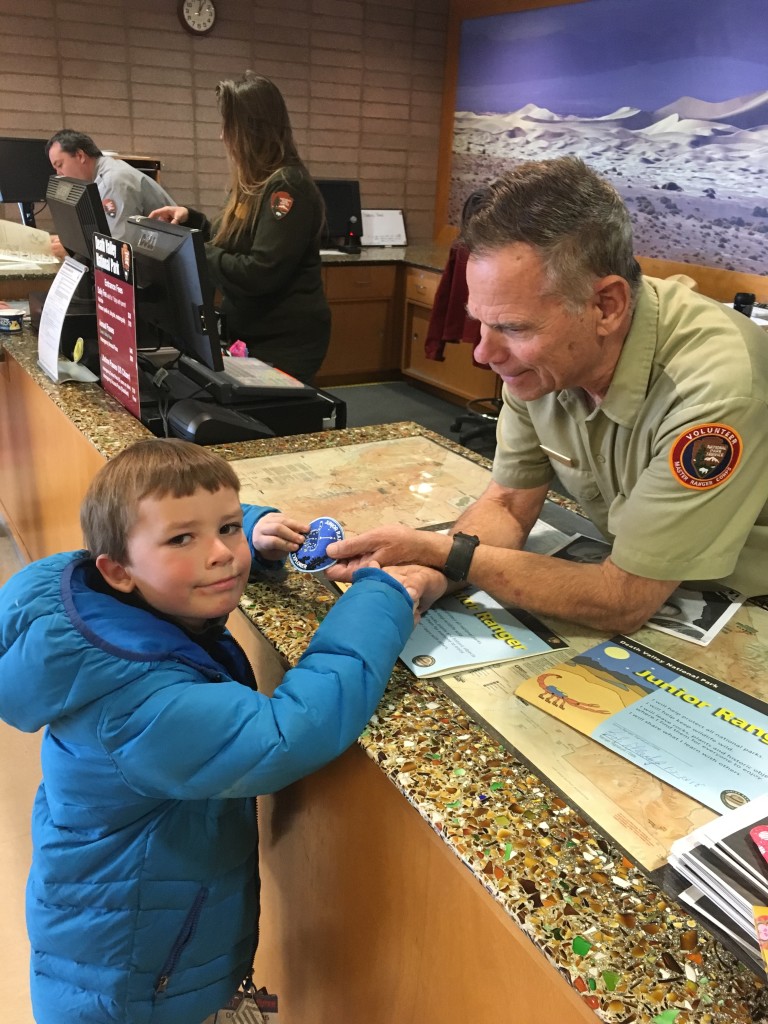
Horses in Death Valley
Due to the harsh conditions and lack of water sources, horses and stock animals are uncommon in Death Valley. Additionally, Death Valley National Park doesn’t feature horse camps or designated sites.
Horses and stock can use the backcountry dirt roads in the park.
Birding in Death Valley
Find birds from the fall through the spring as many migrate to the warmth of Death Valley for the winter months. The best places to see birds are close to water sources, like Saratoga Springs and Furnace Creek area, along with the Wildrose area and the Panamint Mountains.
Wildflowers in Death Valley
If rain arrives during the winter, then the wildflowers start to bloom in late February and continue through June, depending on elevation. Death Valley National Park features Mariposa Lilies, Desert Dandelions and Bear Poppies along with desert Five Spot.
Head to Jublibee Pass along Highway 190 or the Panamint Mountains for the best wildflower viewing. Superblooms are unpredictable from year to year.
Best Sunrise and Sunset Spots in Death Valley
Without trees to disturb the view, find some amazing sunrises and sunsets in Death Valley. For sunrise head to either Mesquite Flats Sand Dunes or Zabriskie Point. Sunsets glow from vivid orange to deep aubergine, and the best place is Badwater Basin or Dante’s View.
Best Beaches in Southern California
Night Sky Programming in Death Valley
Death Valley National Park is the largest Dark Sky Park in the U.S. as determined by the International Dark Sky Association. Inquire at the Visitor Center for night sky ranger programs. Occasionally other astronomical groups hold star parties. This is one of the top things to do in Death Valley National Park.
What to do with Kids in Death Valley
The Junior Ranger Program is the go-to program for families to learn more about Joshua Tree National Park. This is one of the top things to do in Death Valley National Park.
It’s free and takes about two hours to complete. My kids love the badges that the Rangers present them after completing their booklet.
.A drive down Badwater Road is a kid-pleaser and Artists Drive is another one not to miss. The Mesquite Flat Sand Dunes are a family favorite. The overlooks at Zabriskie Point and Dantes View are great stops for families too. Find several ghost towns around Death Valley, like Rhyolite outside Beatty, Nevada.
Death Valley National Park also offers the Night Explorer Patch.
Junior Ranger Badges to Earn at Home
The History of Death Valley
The Tisbisha Shoshone have called Death Valley home for thousands of years. However, it was a group of lost pioneers stranded during the winter of 1849-1850 that named it. First came the gold miners in the 1850s and then borax mining in the 1880s. After the mining moved on, a resort was built to help support the infrastructure.
Death Valley was first protected as a national monument in 1933. In 1994, it became a national park. Additionally, it’s part of UNESCO’s Mojave and Colorado Deserts Biosphere Reserve.
The People of Death Valley
The Timbisha Shoshone people lived in the Death Valley area for thousands of years. Though it was named by the next group of people to traverse through the harsh valley.
In 1840, emigrants and prospectors traveled through the area on the way to coastal California. This included the 49er’s gold prospectors. The gold rush faded, and borax mining replaced it. Chinese workers worked in construction in the area first before mining in borax.
As a desolate place, Death Valley Scotty worked in the Harmony Borax Works before joining the Buffalo Bill Wild West Show.
Sequoia and Kings Canyon National Parks Planning Guide

Manzanar National Historic Site
Shortly after the bombing of Pearl Harbor, the U.S. government ordered over 110,000 American citizens of Japanese descent to be detained in military-style camps. One of ten camps, Manzanar offers a glimpse into the dark area.
Most of the original buildings have been removed. The Manzanar Visitor Center offers an interpretive area that reconstructs portions of the camps. Also, find audio-visual programs and a documentary movie. Take the 3.2-mile self-guided driving tour through the site to see the historic orchard and the rock gardens.
Located at 5001 Highway 395 in Independence, north of the Panamint Springs entrance of Death Valley. Grounds are open from sunrise to sunset. The visitor Center and the interpretive area are open 9 a.m. to 4:30 p.m. in the winter and 9 a.m. to 5:30 p.m. the rest of the year. Free to enter.
San Diego’s Cabrillo National Monument
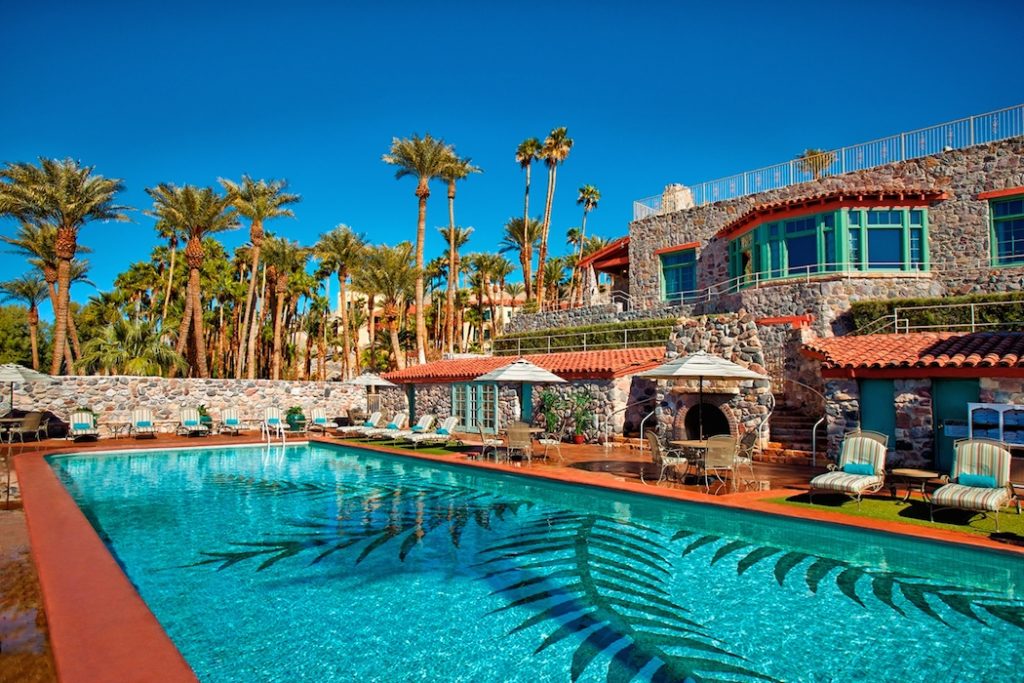
Where to Stay in Death Valley
Stovepipe Wells
In the center of Death Valley, find the Stovepipe Wells area. Developed in 1926, it offers basic lodging along with a general store and gift shop.
Find an 83-room hotel with a pool along with the Toll Road Restaurant, serving breakfast and dinner. The Badwater Saloon is open from lunch through dinner, serving food and cocktails. Also, find a small RV campground with 14 sites that have hook-ups.
Located at 51880 Highway 190.
Panamint Springs Resort
At the western entrance of Death Valley, the Panamint Springs Resort offers motel rooms, cabins, and a campground. Also, find a gas station along with a general store, restaurant, and gift shop. This area opened in 1946.
The motel rooms offer basic accommodations, and the cabins are a newer option. The restaurant serves lunch and dinner, along with cocktails. Find a campground with RV hook-ups along with dry sites.
Located at 40440 Highway 190.
The Oasis at Death Valley
Located in the Furnace Creek area, the Oasis at Death Valley offers two properties.
The Ranch at Death Valley
The Pacific Coast Borax Company built the Furnace Creek area in 1933 to support the railroad after the mining stopped.
The Ranch at Death Valley underwent a 100-million dollar renovation and offers a family-friendly environment with 244 rooms. Conveniently located next to the Furnace Creek Visitor Center, the area is in the center of the park and close to several top sites.
The Ranch now features a palm-tree-lined Town Square with a fountain and benches in front of the new registration building with Mission California design elements. Find a new restaurant along along with a saloon and gift shop.
The 1849 Buffet serves a breakfast, lunch and dinner buffet in the Town Square area. The Coffee and Cream is located next to the buffet and serves coffee drinks and ice cream along with breakfast, lunch, and dinner takeaway options.
The Last Kind Words Saloon offers a heaping spoon of Old West flavor. Find cowboy relics, wanted posters and hunting trophies on the wall. The dinner menu features up-scale offerings like Alaskan salmon along with tomahawk steaks. Open from dinner at 5 p.m. daily. Reservations recommended. Outdoor seating area available.
Located in the Furnace Creek area of Death Valley at the intersection of Highway 190 and Badwater Road.
Activities at the Ranch at Death Valley
Find a spring-fed pool with a year-round temperature of 87 degrees for year-round swimming. Next to the pool, find covered tables, sports courts, tennis courts, and a playground close by.
The legendary 18-hole par 70 golf course is 214 feet below ground level. The course includes water features along with a pro shop and 19th Hole Restaurant with a full bar and outdoor dining (closed in the summer).
The Harmony Borax Works offers a .25-mile walking trail to the remnants of the mining operation, including an original 20-mule wagon train.
The Furnace Creek Stables offer one and two-hour guided horseback riding from October to May. The popular carriage ride tours the date farm and the golf course. Hay rides are also offered. Reservations are recommended, and additional fees apply.
Jeep rentals are also available in the Furnace Creek area from September to May. Get everything you need for an adventure, even an ice crest with ice. Reservations are recommended, and additional fees apply. Drivers must be at least 25 years old.
For kids into science, Furnace Creek Resort has a solar facility with a viewing platform.
The Ranch at Furnace Creek is also an RV park, Fiddler’s Camp.
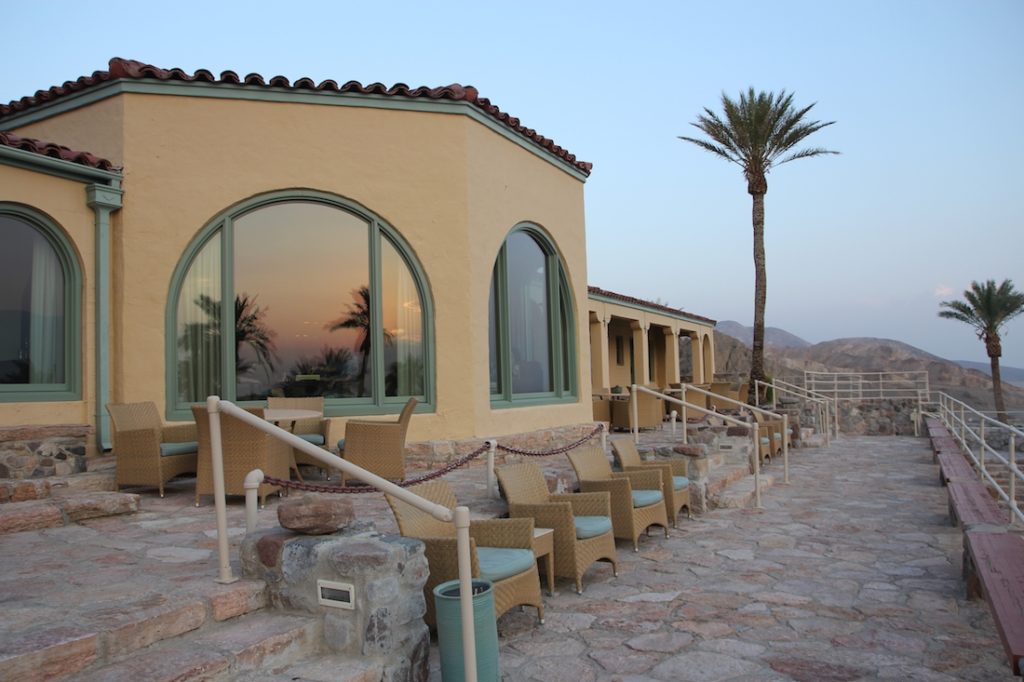
The Inn at Death Valley
As the most luxurious property in Death Valley, the Inn at Furnace Creek is a four-diamond desert resort built in 1927. Long considered a hideout for Hollywood stars and Parisian socialites, the property underwent an extensive renovation.
The arrivals area received a refresh with new fountains and lush oasis landscaping. As guests enter the lobby and lounge area, find a new saltillo tile floor along with inviting new furnishings in desert hues.
The bar is completely new and includes a menu with desert-inspired classic cocktails along with small plates. The dining room’s new furnishings focus on the refined elegance that blends with the chef-created menu with an eye to sustainable offerings.
The main Inn rooms retain their laid-back luxurious feel with sumptuous fabrics and warm wood. The bathrooms feature period details like hex tile.
For a secluded retreat, the 22 new casitas offer a refuge along the date palm oasis. With a separate living room and patio for in-room dining, enjoy privacy steps from the spring-fed pool. Each casita features a wet bar and beverage station as well.
The iconic swimming pool retains its year-round temperature of 87 F. Though enjoy a shaded cabana for all-day lounging. Refreshments are steps away from the poolside.
The Spa at the Inn at Furnace Creek offers packages and an extensive menu of wellness treatments. Find tennis courts on the property and the golfing is a short drive away near the Furnace Creek Visitor Center.
Located in the Furnace Creek area of Death Valley at the intersection of Highway 190 and Badwater Road.
Camping in Death Valley
Note: Most campgrounds are closed during the summer, and the following are the National Park Service campgrounds. Private campgrounds are available at several locations.
Furnace Creek
-
- Year-round
- Reservations October 15 to April 15
- 136 sites (18 with hook-ups) with a Dump Station
- Potable water and flush toilets
Sunset
-
- Seasonal Late Fall to Spring
- No reservations
- 270 sites with a Dump Station
- Potable water and flush toilets
Texas Springs
-
- Seasonal–Late Fall to Spring
- No reservations
- 92 sites with a Dump Station
- Potable water and flush toilets
Stovepipe Wells
-
- Seasonal–Late Fall to Spring
- No reservations
- 190 sites with a Dump Station
- Potable water and flush toilets
Mesquite Spring
-
- Year-round
- No reservations
- 30 sites with a Dump Station
- Potable water and flush toilets
Where’s Death Valley National Park
Death Valley is in Southern California though it’s closer to Las Vegas than Los Angeles. Death Valley Visitor Center is about 130 miles from Las Vegas. It’s about 300 miles from Los Angeles.
California Highway 190 transects Death Valley from Death Valley Junction on the east side to Panamint Springs on the west side. The majority of the services in the park are located in the Stovepipe Wells Village or the Furnace Creek Resort area.
Death Valley National Park is open 365 days a year, 24 hours a day. The admission is $30 per vehicle for a 7-day pass or you can purchase an annual America the Beautiful Pass.
Find close to 1,000 miles of roads in Death Valley National Park though the majority of them are unpaved, four-wheel drive roads unsuitable for most vehicles. Please read the map carefully. Find an airstrip in the Furnace Creek area in Death Valley.
Guide to National Park Passes
Note
Scotty’s Castle is closed until further notice. Due to a flash flood in 2015, repairs are still being made.
ProTips:
- Make reservations for lodging and tours as soon as possible. Lodging reservations can be made 13 months in advance.
- Don’t enter mines, shafts or tunnels.
- Carry extra water year-round. Water is only available in the developed areas of the park.
- Don’t rely on technology for directions. Get a map at the visitor’s center.
- The summer season is from May through September. The park suspends popular programs like ranger programs and horse trips.
- Don’t hike at the lower elevations during the summer.
- Don’t leave kids or pets in vehicles in the summer. Temperatures can reach 160 F in the car.
Disclosure
Consideration for lodging partner who hosted a trip.
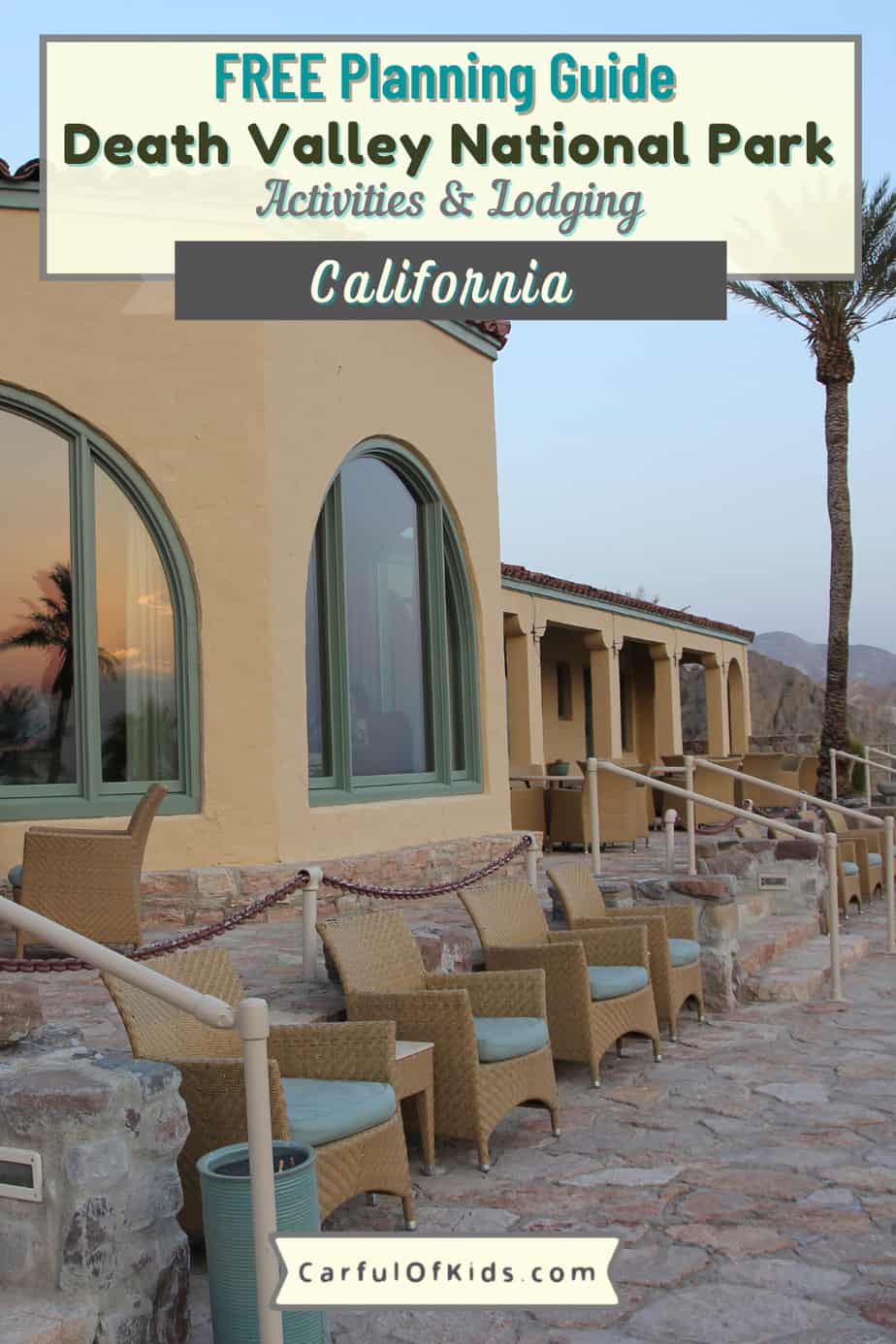
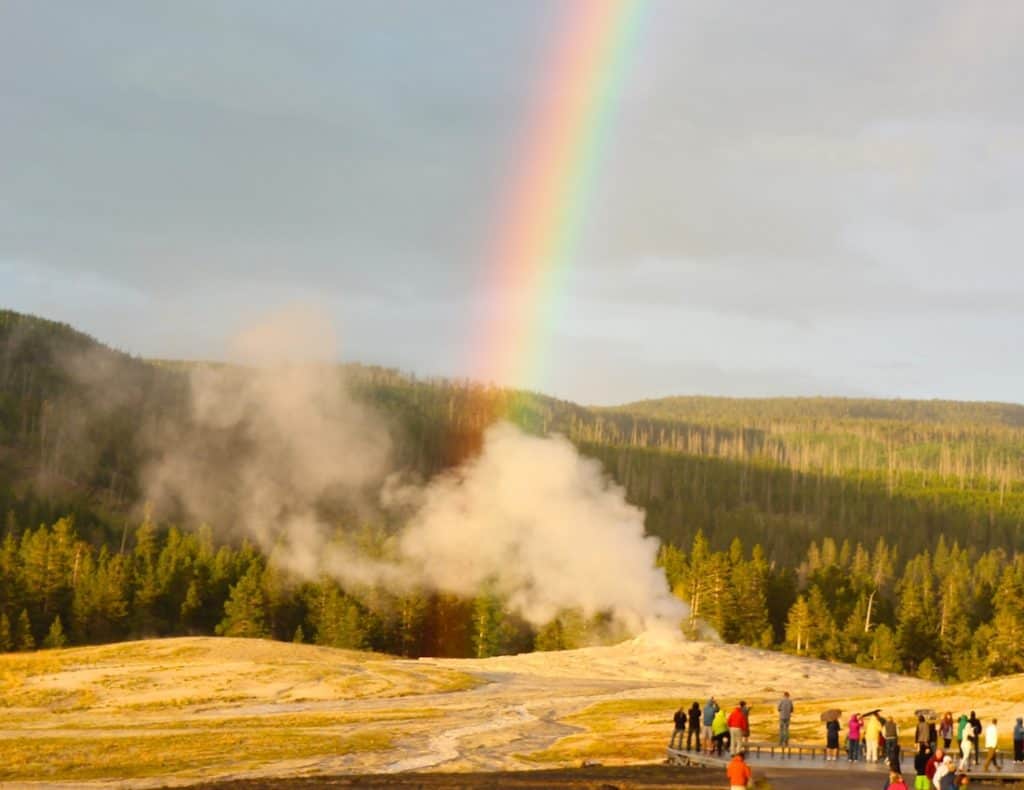
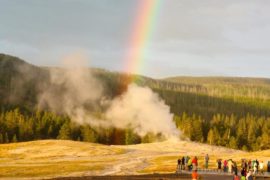
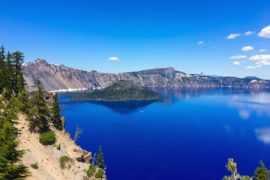
Comments are closed.